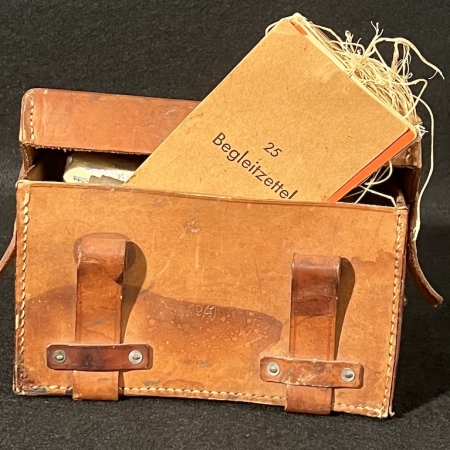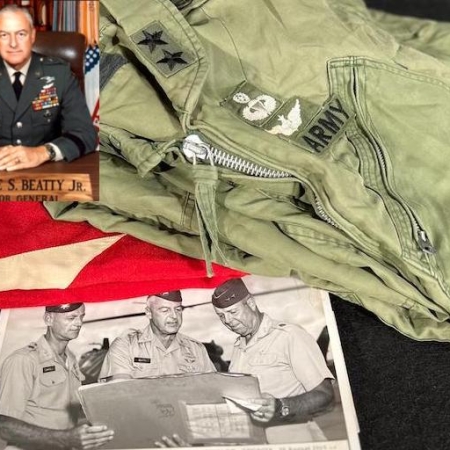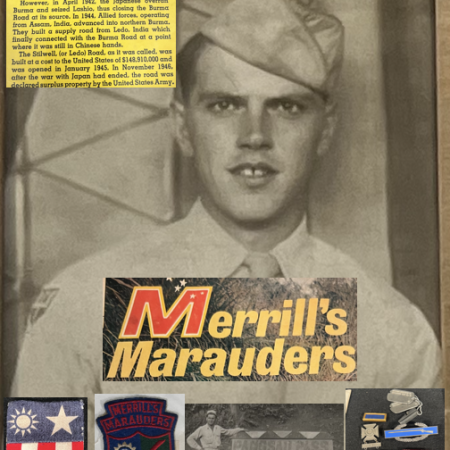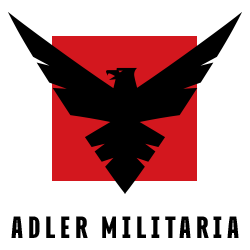Showing 244–252 of 1093 resultsSorted by latest
-

WWII Original German Army Medical Pouch 1941 with Original Contents
A really nice pouch with the wound tags still inside. The Liquid looks to have ran out a long time ago.
-

WWI & WWII Kreigsmarine Wehrpass & Marine Militärpass Matrosen Stolz – SMS Nassau – Battle of Riga – Battle of Jutland – Dog Tag WW2
Here we have a really interesting KM Grouping. This grouping comes with a Photo on board the SMS Nassau which is modelled in the below video really well: It seems he was called up in WWII and did a small service, for which his WWII KM Tag was added to his Wehrpass when he was discharged. Battle of Jutland
-

WWI German Militärpass & Wehrpass Grouping – Johann Steigerwald – Infanterie Regiment Nr 40 – Battle of Riga 1916 Iron Cross – Captured in Soissons 1918
An Interesting little grouping to Johann Steigerwald, Who served with Infanterie Regiment Nr 40 on both the Eastern and Western Front during World War One. Interestingly he fought at the battle of Riga in Latvia and earns the Iron Cross Second Class, and in 1918 he was captured in Soissons, France he was released in September 1919. During the Third Reich he was issued a Wehrpass which confirms his service in WW1. Could make a really nice research project.
-

WWII Photos of Obersalzburg – Hitlers House – Eagles Nest – Berchtesgaden – Berghof – Haus Wachenfeld – SS Base (Offer Accepted)
Interesting photos showing personal spaces around Hitlers Berghof residence, many famous places shown here. These were removed from an Album.
-

WWII German M42 Helmet – Trophy from Italy 1944 – “Killed by Alpin Troops & Charles” – Rare (Offer Accepted)
An unusual but great M42 German Helmet. Like many of our helmets they are bring backs, but not many are like this. The Alpin Troops – 10th Mountain Division in Italy 1944 Price is Posted Tracked World Wide
-

WWII German Waffen SS – M43 Feldmütze – Field Cap – 1010/44 – Dachau 1944 Produced – GI Bring Back 63rd Infantry Division April 1945 Germany ( With COA ) – Rare (Offer Accepted)
This is a wonderful issued M43 SS, in a rarer pattern for these 1010/44 (Dachau) from my research his version with the white inside of the visor is not a common model/production run. Condition: It is an issued M43 with the classic look to it as they often folded these away into pack/pocket when not used. Minimal wear. Maker: 1010/44 – Dachau, production year 1944. This Waffen SS M43 was a bring back from: Ernest, Lawrence A. Pfc. 36833006 – 253 Inf Reg, 63rd Infantry Division – US Army https://en.wikipedia.org/wiki/63rd_Infantry_Division_(United_States) Ernest is mentioned in a book also for the battles in April in Germany, he was wounded in early April 1945. Battle Between the Jagst and Kocher Rivers, 4-12 April 1945 – 1997 These series of battles which was captured in some part on video can be viewed here, Ernests exact company can be seen taking hoards of German POWs in April 1945 in Germany. Interestingly, the 63rd Infantry Division was accused of shooting 17 year old Waffen SS recruits in April of 1945. Is this one of these caps? We will never know sadly. More on the killing can be found here: https://en.wikipedia.org/wiki/Jungholzhausen_massacre This M43 was sold by a very reputable dealer in the USA who also made a COA at a value of 3,500 USD. It will be forwarded to the next owner. Please remember, the price shown is including World Wide Tracked Shipping.
-

Vietnam War Era US Army – Chief of Staff 1st Cavalry Division (Air Assault) Major General George S Beatty Jr – Generals Flag and Flight Suit – Photos – Rare
NAME: George S. Beatty, Jr. RANK: Major General BRANCH: INF STATUS: Retired SERVICE: 35 years DOB: 26 October 1917 SERVICE INFORMATION HOURS FLOWN: 2483 COMBAT HOURS: 126 FLT/NCO CLASS: 60-1 SCHOOL: MILITARY SCHOOL: Naval War College AVN DESIGNATION: Senior Army Aviator AIRCRAFT INFORMATION CV-2B OV-1 A/B OH-1 A/E OH-13 E/G/H/S T-42 & U-21A U-6 A U-8 D/F UH-1 B/D/H COMBAT EXPERIENCE World War II – Saipan, Okinawa 1941-1945 Korea – 187th ABN RCT 1952-1953 Vietnam – 1st Air CAV 1965-1966 UNIT ASSIGNMENTS 1963-1965 11th Air Assault Division 1965-1966 1st Air Cavalry Division POSITIONS HELD Group Commander CG, Army Flight Training Center DECORATIONS Distinguished Service Medal [11] Legion of Merit [3] Bronze Star w/V device Air Medal [8] SIGNIFICANT ACHIEVEMENTS Howze Board 1962 1st Brigade Commanding Officer Aviation Group Commanding Officer Chief of Staff, 1st Brigade Chairman, AAMF Board During the 1960’s when the Army’s Air Mobility concept was born, tested, and proven in combat, George Beatty played key roles in each of the phases. In 1962 he was assigned to the Army’s Tactical Mobility Requirements Board (“Howze Board”) where he was instrumental in the writing of the plan for the accomplishment of the Board’s mission. He supervised the running and recording of the field tests of all aspects of the Board’s interest. Upon completion of the Board report, he and Colonel (later Lieutenant General) John Norton went to Washington to brief the Board’s findings and recommendations to the Secretary of Defense and other interested Federal Agencies. He was assigned to the 11th Air Assault Division (AAD) in January 1963 as Commanding Officer, 1st Brigade and commanded that Brigade through all of the testing and field exercises. He briefly commanded the 11th Aviation Group in 1965 during which time a composite Aviation Company was formed and sent to the Dominican Republic to support the XVIII Corps. When the 11th AAD was redesignated as the 1st Cavalry Division (Airmobile), Beatty was assigned as Chief of Staff where he coordinated the planning and loading out of the division. In Vietnam, he served as Chief of Staff, and then Brigade Commander of the 1st Brigade. During this eventful year he saw the air assault concept, which he had helped pioneer, proven under fire and accepted by the U.S. Army. From 1968 to 1970, he commanded the Army Flight Training Center at Hunter Army Airfield at Fort Stewart, Georgia where several hundred rotary wing pilots were graduated every two weeks. Training of South Vietnamese students was initiated during this period, and their unfamiliarity with the English language required the introduction of special innovative teaching techniques to enable those students to succeed. Throughout his career, General Beatty was involved in many pioneering developments in the concepts, training, organization, tactics, and equipment that have been incorporated into Army Aviation as we know it today.
-

WWII US Army Special Forces Archive – Merrill’s Marauders Grouping – Cpl William H Hoover – Burma – Assam – Ledo Road – Stilwell – Ultra Rare
This is an incredible original archive to a member of the famous Merills Marauders, from his personal ID Tags right down to all his photos and negatives. The patches are astounding, considering what one of these bring on todays market, this is an instant collection of some of the most sought after from the Pacific during WW2. Needless to say here that this archive is virtually a one of a kind find. The research, the item belonged to: Name William H Hoover Race White Marital Status Married Rank Private Birth Year 1907 Nativity State or Country Ohio Citizenship Citizen Residence Ashland, Ohio Education 2 years of high school Civil Occupation Managers and officials, n.e.c. Enlistment Date 20 Feb 1943 Enlistment Place Cleveland, Ohio Service Number 35048537 Branch Branch Immaterial – Warrant Officers, USA Component Selectees (Enlisted Men) Source Civil Life Height 66 Weight 170 NAME: William H Hoover ADMISSION DATE: Nov 1944 DISCHARGE DATE: 1944 DIAGNOSIS: Diagnosis: Pes planus; SecondDiagnosis: Hyperidrosis TYPE OF DISCHARGE: Duty LENGTH OF SERVICE: No entry made SERVICE NUMBER: 35048537 Items: Identification Tags, Medal Bars, Sterling Silver Combat Infantry Badge, Presidential Citation, Silver named and numbered bracelet, CIB cigarette case made in India, Ring from India, 4 loose CIB patches maker marked BC. CIB Patch made by the Chinese, 97th Div Patch, a Merrills Marauders Patch, US Issued CIB Badge, 3 x CIB Patch 1944 Chinese made one of which is leather. Corporal and Overseas bar insignia denoting 1 1/2 Year. Three portraits of W H Hoover, one wearing the 75th Div Patch (Photo taken in October 1944). A Large selection of bank notes, for Germany, France 1944 Occupation, French, Japanese Occupation Rupees, Commonwealth Indian/British Rupees, Mexican Pesos, Chinese. Interestingly, some of Hoovers photos have been archived by the CIB Archive at some stage, and it is possible that some of his images are already published. In, Merrill’s Marauders – US War Department Historical Division – ISBN 0892010630 A series of original correspondence from W H Hoover – To his parents and friends, interestingly he wrote at the top of every page where he was, this includes, Burma Road, Ledo Road, Assam, India. Photos – His photos show the above named locations, and depict his experience there. Many of the photos are museum grade, some have been archived by CBI Turner – the negatives of many of the photos are included. An Issued of : Merrill’s Marauders – Movie Classic – a COmic cut out of Superman with Merrill’s Marauders. Indian Flyer – likely propaganda. Yank Weekly – June 24 1944 – plus much more. Deserves further research, or possible publishing. Unit History Merrill’s Marauders (named after Frank Merrill) or Unit Galahad, officially named the 5307th Composite Unit (Provisional), was a United States Army long range penetration special operations jungle warfare unit, which fought in the Southeast Asian theater of World War II, or China-Burma-India Theater (CBI). The unit became famous for its deep-penetration missions behind Japanese lines, often engaging Japanese forces superior in number. In the Quebec Conference (QUADRANT) of August 1943, Allied leaders decided to form a U.S. deep penetration unit that would attack Japanese troops in Burma. The new U.S. force was directly inspired by, and partially modeled on Orde Wingate’s Chindits Long Range Penetration Force. A call for volunteers attracted around 3,000 men. A Memorandum from the Operations Division (OPD) of the War Department dated 18 September 1943 (OPD 320.2) listed the proposed composition of the new American long-range penetration force, which would be an all-volunteer unit. The Caribbean Defense Command provided 960 jungle-trained officers and men, 970 jungle-trained officers and men came from Army Ground Forces (based in the Continental United States) and a further 674 “battle-tested” jungle troops from the South Pacific Command (Army veterans of the Guadalcanal and Solomon Islands campaigns), with all troops to assemble at Nouméa, New Caledonia. General Douglas MacArthur was also directed to transfer 274 Army combat-experienced volunteers from the Southwest Pacific Command, veterans of the New Guinea and Bougainville campaigns. A few Pacific veteran volunteers came from stockades where volunteering earned them their freedom. They were sprinkled throughout the unit and called “The Dead End Kids” after the Hollywood film series featuring juvenile delinquents. The unit was officially designated as 5307th Composite Unit (Provisional) with the code name Galahad. The men were first sent to India arriving in Bombay on 31 October 1943 to train. Here they were reinforced with Air Corps and Signal Corps personnel, as well as an animal transport company with mules and experienced muleteers. Officers and men were equipped with U.S. Herringbone Twill (HBT) uniform cotton OD uniforms, M-1943 fatigues, Type II field shoes (with or without canvas leggings), jungle boots, canvas load-bearing equipment, blanket (one-half tent or “shelter-half” per man), poncho, and a machete or kukri for brush clearing. Small arms included the .30-06 M1 Garand, the .30-06 M1903A4 sniper rifle, the .30 M1 carbine, the .45 Thompson submachine gun, the .45 M1911 pistol, the .30-06 BAR (M1922 machine rifle version), and the .30 M1919 Browning air-cooled belt-fed machine gun. Mules were used to haul radios, ammunition, and heavier support weapons, including the 2.36-inch M1A1 bazooka and the U.S. 60 mm M2 Mortar;[6] the latter was often employed without its bipod in order to speed deployment. The 5307th was originally destined to train in long-range penetration tactics under the direction of Brigadier Charles Orde Wingate, commander of the Chindits. At Deolali, 200 km (125 miles) outside Bombay, the troops endured both physical conditioning and close-order drill, before entraining for Deogarh, Madhya Pradesh. The unit was to have 700 animals that included 360 mules. There were to be as many more but the ship that was carrying them was torpedoed in the Arabian Sea. They were replaced by 360 Australian Waler horses that had originally been with the 112th Cavalry in New Caledonia who were deemed unfit for jungle warfare. They had traveled to India where they served with the Chinese Army before being assigned to the…
-

WWII US Army Generals Special Passport Grouping – Major General William C Rose – Chief of Executive Services, War Department Manpower Commission – Original (Offer Accepted)
This small grouping belonged to General W C Rose, it seems he used the Special Passport once to go to Canada. These types of US IDs are not common finds. Rose, William Clayton Major-General 6th of July 1889 † 9th of September 1973 (Regular Army) Promotions 1935-08-01 Lieutenant-Colonel 1940-09-01 Colonel 1941-04-07 Brigadier-General (Army of the United States) 1945-09-14 Major-General (Army of the United States) 1945-10-30 Termination of rank Major-General (Army of the United States) 1945-10-30 Termination of rank Brigadier-General (Army of the United States) Service 1941-XX-XX – 1942-XX-XX Assistant Adjutant-General, US Army 1942-XX-XX Chief of Military Division, War Department Manpower Commission Chief of Executive Services, War Department Manpower Commission 1945-XX-XX Vice Chairman of the War Department Manpower Commission 1945-XX-XX – 1946-XX-XX Chief of Staff to the High Commission to the Philippines 1946-10-XX Retired Price is shipped tracked world wide.




